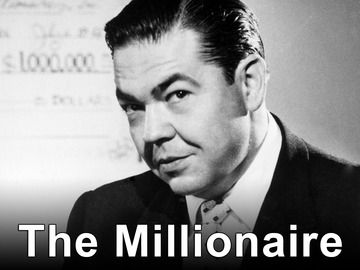How Movie Theaters Became America’s Escape During the Great Depression
Introduction: Escaping Hardship Through Cinema
During the Great Depression, a period marked by widespread unemployment, poverty, and uncertainty in the United States, millions sought solace and distraction from daily struggles. Movie theaters rapidly became a cornerstone of American entertainment, providing not only an escape from the harsh realities of life but also a sense of hope, community, and cultural engagement for people of all ages. This article explores the factors that made movie theaters an essential source of entertainment during the Depression, the industry’s resilience, and how audiences accessed the unique experiences they offered.

Source: stock.adobe.com
The Appeal of Movie Theaters in Times of Crisis
In the depths of the Depression, between 60 to 80 million Americans flocked to movie theaters each week-a staggering number given the financial hardships most families faced [1] . Movies provided a therapeutic diversion for weary, impoverished audiences, helping to sustain national morale when hope was scarce. The psychological and ideological role of cinema was so pronounced that Will Hays, then head of the Motion Picture Producers and Distributors Association, declared film to be the medium that most effectively maintained morale during periods of national crisis [1] .

Source: pacificutilityaudit.com
Audiences were drawn to movie theaters for several compelling reasons:
- Affordable Entertainment: Admission prices were deliberately kept low, typically ranging from 10 to 25 cents, making movies accessible even to those with limited means [2] .
- Variety and Value: Theaters offered double features, newsreels, cartoons, and giveaways such as dishes or cash prizes through promotional events like Bank Night, maximizing the value of each visit [1] .
- Emotional Escape: Comedies and musicals let people temporarily forget their troubles, while dramas and adventure films offered worlds more glamorous or exciting than their own [5] .
Accessing the Movie Experience
Despite economic constraints, attending the cinema remained a regular treat for families, children, and adults alike. Some communities had multiple theaters, making it easy for people to drop in and catch part of a screening, much like channel surfing on television today [4] . Retrospective surveys in the UK revealed that nearly all respondents visited the cinema at least weekly during the 1930s, with many going several times a week [4] .
Here’s how audiences accessed and enjoyed movie theaters during the Depression:
- Drop-in Culture: Theaters screened movies continuously throughout the day, allowing patrons to arrive at any time and stay for as many showings as they wished [4] .
- Promotional Incentives: Lower ticket prices, double features, and giveaways encouraged repeat visits and made the experience feel special [1] .
- Community Gathering: Movie theaters functioned as social hubs, where people could connect, share experiences, and briefly forget the economic gloom outside [2] .
- Cultural Influence: The sights and sounds of cinema shaped popular culture, influencing fashion, music, and even daily conversation [4] .
What Made Movies So Effective as Entertainment?
Hollywood’s triumph lay in its ability to respond to the public’s needs. Studios invested in well-written stories, glamorous stars, and sophisticated marketing to appeal to broad demographics [2] . The most popular genres-comedies, musicals, and escapist adventures-offered laughter, music, and fantasy, helping audiences cope with the stress and uncertainty of their daily lives [5] . Even as the industry faced its own financial challenges, closing a third of theaters and reducing salaries, it worked tirelessly to keep doors open and provide value to its patrons [1] .
Classic films from the era, such as
King Kong
,
Snow White and the Seven Dwarfs
, and
Gone With the Wind
, became cultural touchstones that endure today
[3]
. These productions gave audiences a sense of hope and resilience, reminding them of their own idealized qualities-breezy, likable, and gallant
[1]
.
Step-by-Step Guidance: How to Access Similar Entertainment Today
For those inspired by the Depression-era movie experience, here’s how you can access affordable entertainment and community engagement today:
- Find Local Theaters: Search online for historic movie theaters or community cinemas in your area. Many offer discounted tickets, special events, and classic screenings that capture the spirit of the 1930s. Visit official theater websites or search for local arts organizations.
- Explore Streaming Services: Many streaming platforms offer classic films from the Depression era. Consider searching for well-known titles and genres (comedies, musicals, dramas) through services like the Library of Congress ( https://www.loc.gov/ ), which hosts archives and educational resources related to American film history.
- Attend Community Events: Local museums, libraries, and cultural centers often host film nights or talks about the history of cinema. Contact your nearest public library or local museum for event schedules and participation details.
- Participate in Online Forums: Join film history forums, social media groups, or online communities focused on classic movies. These platforms offer rich discussion, viewing recommendations, and tips for accessing historical entertainment.
- Support Arts Initiatives: Many cities have arts councils or nonprofit organizations dedicated to preserving and promoting movie history. Search for official arts councils using your city or state as a keyword to find programs and activities.
If you need assistance finding affordable entertainment or cultural programs, consider contacting local social services agencies, arts councils, or using official government portals such as the National Endowment for the Arts (search for “National Endowment for the Arts” on your preferred search engine or visit https://www.arts.gov/ ).
Challenges and Solutions
Potential Challenges: Economic barriers, limited access to theaters in some regions, or lack of awareness about available programs may persist. Additionally, modern audiences may face different challenges, such as digital divides or accessibility issues.
Solutions and Alternatives: Seek out free or low-cost virtual screenings, community film projects, or educational resources. Many organizations provide sliding-scale pricing or discounted rates for students, seniors, or low-income families. If unsure where to start, contact your local public library or city’s arts council for guidance and assistance.
Key Takeaways
Movie theaters became a vital source of entertainment during the Depression by offering affordable, emotionally uplifting, and culturally influential experiences. Their resilience and adaptability helped millions cope with adversity, while their legacy continues to shape how we seek escape and community today. Whether through historic theaters, digital platforms, or local events, the spirit of Depression-era cinema remains accessible for those looking to reconnect with the power of film as collective escape and inspiration.
References
- [1] Digital History (n.d.). The Movies Meet the Great Depression.
- [2] Best Movies by Farr (2025). How Movies Got Us Through the Great Depression.
- [3] Wikipedia (2009). Entertainment during the Great Depression.
- [4] The Herbert (2022). Grown Up in the 1930s – Entertainment.
- [5] Library of Congress (n.d.). Art and Entertainment in the 1930s and 1940s.
MORE FROM hotondeals.com













